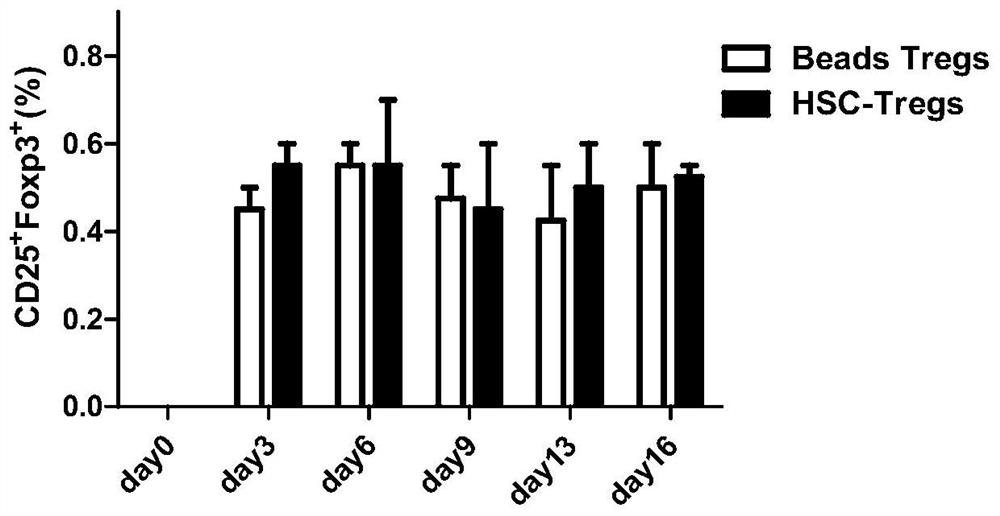Method for inducing hematopoietic stem cells to differentiate into regulatory T cells in vitro
A technology for hematopoietic stem cells and cell differentiation, which is applied in the field of inducing hematopoietic stem cells to differentiate into regulatory T cells in vitro, and can solve problems such as signal stimulation of thymic basal cells
- Summary
- Abstract
- Description
- Claims
- Application Information
AI Technical Summary
Problems solved by technology
Method used
Image
Examples
Embodiment 1
[0053] Material: Human peripheral blood.
[0054] Instrument: flow cytometer, flow cytometer (BD company, model: Vantage SE).
[0055] Reagents: Flow cytometric antibodies (CD3, CD4, CD34, CD38, CD39, Foxp3, etc.) were purchased from eBioscience, rhIL-2 (after adding the final concentration was 100IU / ml), rhIL-15 (10ng / ml), atRA (after adding The final concentration is 10 nM) was purchased from Wyeth Pharmaceuticals. Medium 1 was prepared by adding penicillin 100U / ml, streptomycin 100μg / ml and 50mM dihydroxyethanol to α-MEM medium. Medium 2 is composed of complete RPMI-1640 medium supplemented with 100U / ml penicillin, 100u g / ml streptomycin, 2mM L-glutanoic acid, 10mM 4-hydroxyethylpiperazineethanesulfonic acid, 0.1mM non-essential amino acids, 1mM Sodium pyruvate (purchased from BioSource International) and 50 uM dihydroxyethanol (purchased from Sigma Aldrich) was prepared.
PUM
 Login to View More
Login to View More Abstract
Description
Claims
Application Information
 Login to View More
Login to View More - R&D
- Intellectual Property
- Life Sciences
- Materials
- Tech Scout
- Unparalleled Data Quality
- Higher Quality Content
- 60% Fewer Hallucinations
Browse by: Latest US Patents, China's latest patents, Technical Efficacy Thesaurus, Application Domain, Technology Topic, Popular Technical Reports.
© 2025 PatSnap. All rights reserved.Legal|Privacy policy|Modern Slavery Act Transparency Statement|Sitemap|About US| Contact US: help@patsnap.com



